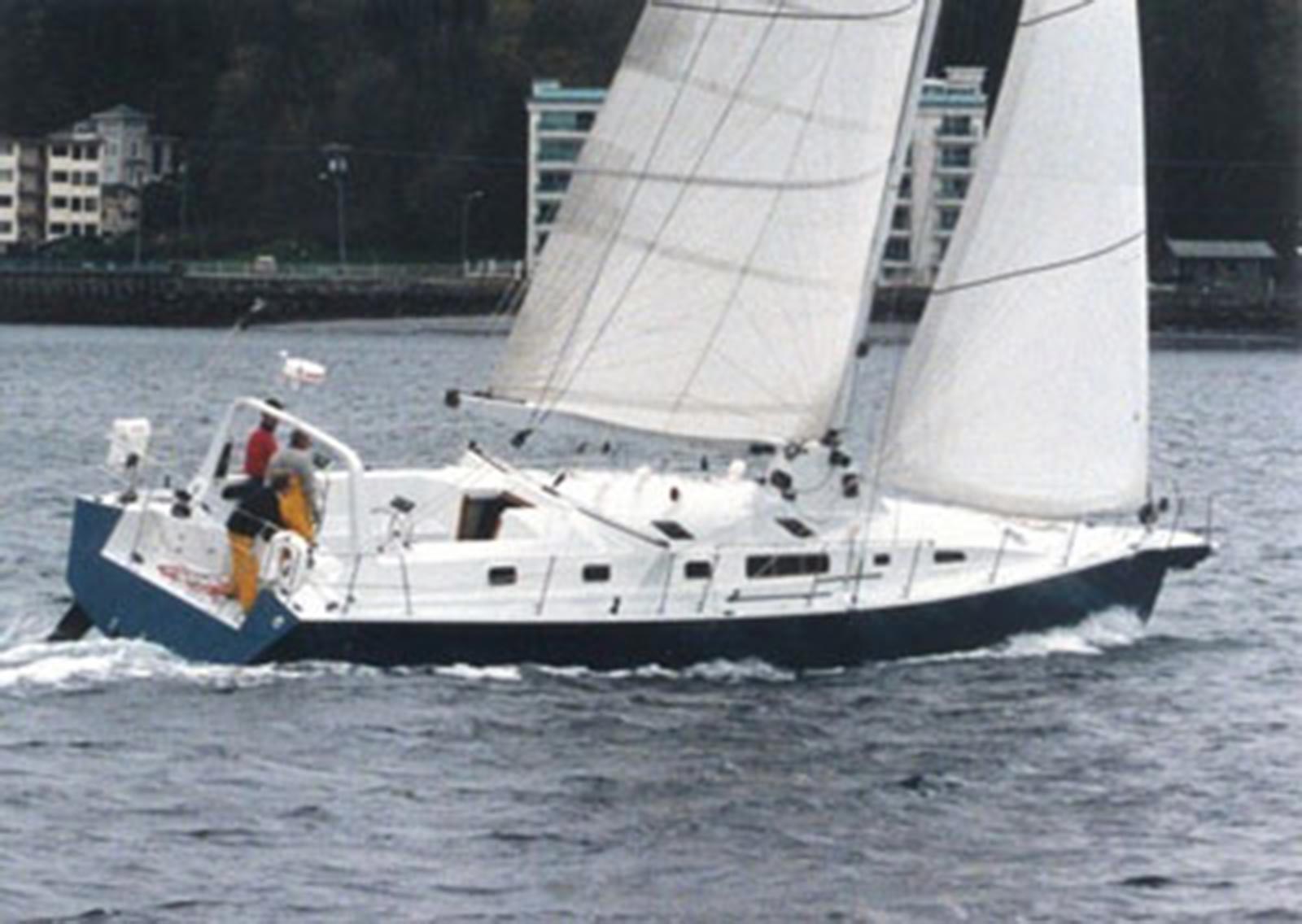The Riptide 55 was my first keel boat design (1994). She was designed and built for George Thurtle of Seattle WA who wanted a high performance offshore family cruising yacht. George is a very open-minded client who encouraged me to take the design to its logical conclusion, and I was perfectly willing to do so. She was very innovative for her time, with such characteristics as: water ballast, a swept spreader rig with no permanent backstay, a carbon mast and carbon boom attached to a waist high hollow mast “pod” (which provide extra light and ventilation below), a long sprit with masthead asymmetrical chute, a long curved traveler without vang, twin rudders, a chined hull, swim step with dinghy garage, and a bow extension which puts the anchor roller and sprit well forward of the stem and provides ample working deck in way of the forestay. Many (but not all) of these features later became widespread in racing and cruising circles. Eric created this rendering using Robert McNeel’s Rhinoceros (called Accu-Model at the time), which was either the first or second commercial project done with the now-popular CAD modeling software.
-Paul

Particulars
| LOA | 16.61 m (54.5’) |
| LWL | 16.1 m (52.9’) |
| Beam | 4.92 m (14.7’) |
| Draft | 2.92 m (9.6’) |
| Displ | 10900 kg (24000#) |
| Fixed Ballast | 4310 kg (9480#) |
| Water Ballast (per side) | 727 kg (1600#) |
| Displ/length ratio | 72 |
| Mast Hght above DWL | 19.6 m (64.2’) |
| Upwind Sail Area | 126 sqm (1362 sq ft) |
| Downwind Sail Area | 162 sqm (1750 sq ft) |
Construction Details
Built by Shaw Boats in Aberdeen, WA.
The goal of the construction was to maximize performance for a given cost and maximize the use of laminated flat stock.
Hull below the chine was built of strip planked Duracore with eglass/epoxy skins. The sides were built from carbon/eglass/epoxy skins on balsa core layed up on a flat table and cut to computer patterns. These sides were sprung into the female building jig.
The deck and cockpit surfaces were similarly built from carbon skin /honeycomb core flat panels sprung into place like a “stitch and glue” dinghy.
All interior parts were built from lightweight composite panels cut out to accurate computer patterns for minimum weight and minimum waste.
The spar was built by Hall Spars. Standing rigging is discontinuous rod.